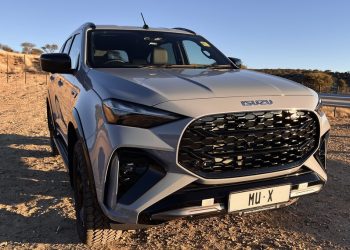
Namibia recorded an 86.4% increase in vehicle sales to 1,260 vehicles in July 2023, compared to 676 vehicles sold in July last year, latest data reveals.
According to Simonis Storm Securities’ vehicle sales report, the vehicle sales landscape in Namibia is thriving and started the third quarter of 2023 on an encouraging note.
The firm’s Economic Researcher Angelique Bock said the numbers are even more remarkable given the slight decrease of 4.5% from the prior month’s sales of 1,320 vehicles.
“Passenger vehicles and commercial vehicles continue to dominate the market, accounting for a staggering 94% of total sales in July 2023. This trend has been consistent throughout the year, with these two vehicle categories consistently maintaining a 94% market share,” she said.
The report outlines that 638 passenger vehicles and 549 light commercial vehicles were sold in July 2023, reflecting substantial year-on-year growth rates of 67.5% and 106.4%, respectively.
Additionally, Bock noted that commercial vehicles, including extra heavy, medium, and heavy types, posted impressive growth figures ranging from 41.7% to an astounding 422.2% year-on-year increase.
“The notable growth in vehicle sales is primarily attributed to the robust demand from individual buyers purchasing through dealerships, which accounted for 92% of total sales year-to-date,” she shared.
Meanwhile, in July dealerships acquired 1,101 vehicles, marking a remarkable 63.4% year-on-year increase.
Notably, rental companies also contributed to the surge, purchasing 159 vehicles. This trend is a significant departure from previous years and sets a new tone for the Namibian automotive market.
The report reveals that this surge in sales is also driving prices higher, as the average prices of locally purchased vehicles experienced a notable 12.8% year-on-year increase in July 2023.
Meanwhile, heavy commercial vehicles experienced the steepest price hikes.
“Despite these rising costs, vehicle sales have demonstrated resilience, with renowned brands such as Toyota, Volkswagen, and Ford playing pivotal roles in driving consumer demand,” Bock highlighted.
Credit trends have also played a key role in supporting the vehicle sales surge. Both household and corporate installment and leasing credit have been on an upward trajectory, bolstering overall sales.
Bock points out that while this is positive, there’s a shift toward cash sales due to the increased cost of credit.Â
“The average vehicle loan across the country currently stands at prime rate plus 2 percentage points (13.50%), potentially indicating a shift in consumer behavior towards alternative financing options” she emphasised.
Furthermore, she anticipates that the Bank of Namibia will maintain stable interest rates in the coming months, further promoting car loans and potentially sustaining vehicle sales momentum.
While vehicle sales are experiencing a notable upswing, the report also highlights some challenges related to fuel consumption and sustainability.
This comes as the consumption of local fuel has remained relatively flat since 2017, likely influenced by factors such as carpooling and remote working, which aim to reduce costs and environmental impact.Â
As a result, the report notes that these changes have implications for revenue streams for the Roads Authority and the need to explore alternative sources of income.











